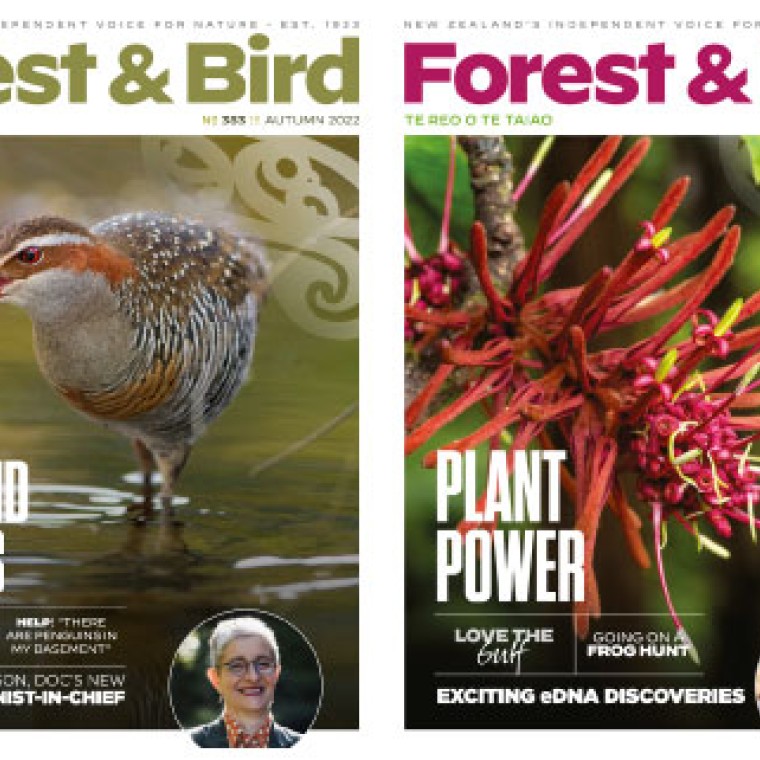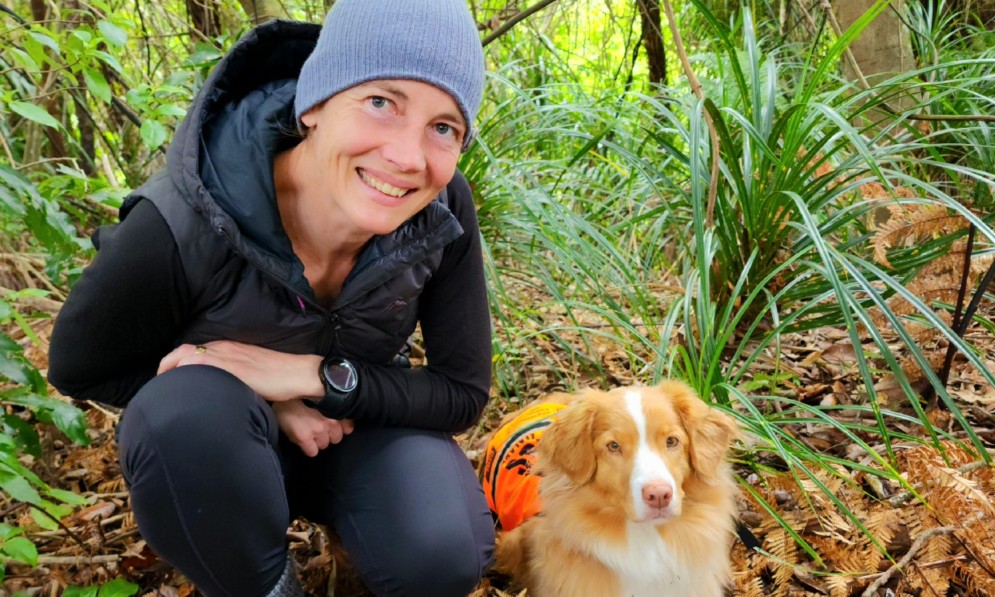The team at Mahakirau Forest Sanctuary has removed more than 18,000 predators over two decades, helping restore a precious Coromandel biodiversity hotspot. By Kerrie Waterworth
Forest & Bird magazine
A version of this story was first published in the Spring 2025 issue of Forest & Bird magazine.
Night-time at Mahakirau is conservation advocate Sara Smerdon’s favourite time to take a walk. “It is when the forest truly comes alive. It’s dark, warm, and damp – an incredible time for exploration,” she said.
Sara and her husband are one of 24 private landowners whose properties together form the 580ha Mahakirau Forest Estate, almost all of it protected by a QEII covenant.
Situated on the crest of the Coromandel Range and bounded on three sides by Department of Conservation land, the estate is ranked as holding “outstanding wildlife value”.
It is home to critically rare and endangered species such as the northern striped gecko, and Hochstetter’s and Archey’s frogs. It is also the habitat for Coromandel brown kiwi, North Island kākā, and forest ringlet butterflies.
These species are supported by the sanctuary’s diverse indigenous vegetation, including more than 50 varieties of trees and high-risk species, such as kauri, king fern, and Kirk’s daisy.
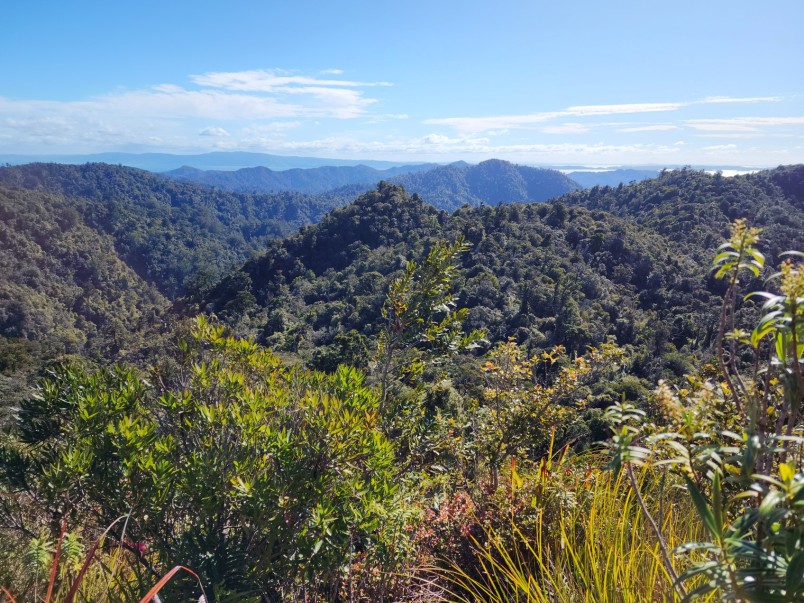
Mahakirau Forest Sanctuary forest. Credit Sara Smerdon
Sara says Mahakirau is her home and living there allows her to easily get a half hour “fix” of oxygen-filled nocturnal observation before bed.
“These precious moments motivate me for the next day’s conservation efforts,” she said.
Mahakirau Forest Sanctuary is featured on Forest & Bird’s Give a Trap website, which matches donors with predator-free projects and sends gifted traps directly to recipients so they can be put to use straight away.
After sharing the Give a Trap link on Facebook, the project was gifted a box of six rat traps and a Flippy Timmy possum trap.
“Every donated trap helps to close the gaps in our extensive trap network and strengthens our protective buffer,” added Sara.
In 2001, the Mahakirau Forest Estate Society Incorporated was established to act on behalf of the landowners. Sara has been the Society’s volunteer conservation advocate for more than a decade.
Her role covers everything from overseeing predator control, monitoring biodiversity, and facilitating scientific research and educational outreach programmes to raising awareness of the forest’s rarest species on social media.
Sara says the ultimate goal is to provide a safe haven and a safe corridor to neighbouring sanctuaries for the estate’s rare indigenous species. But, unlike other predator-free sanctuaries, there is no fence surrounding the estate to keep out the predators.
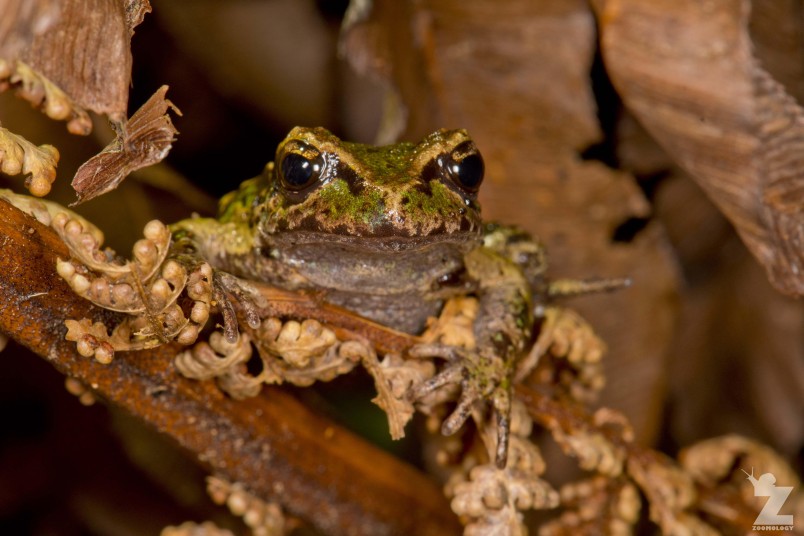
Archey’s frog. Credit Tom Miles/Zoomology
“Our fence is vigilance, meticulous trap placement, regular maintenance, adaptability, and swift response to predator incursions,” she said.
More than 3500 traps, bait stations, and monitoring devices are positioned strategically in known predator hotspots, along animal corridors, and near sensitive habitats with breeding populations of frogs, geckos, kiwi, and other native species.
Many predator species are targeted, including mice, rats, ferrets, stoats, weasels, feral cats, possums, pigs, goats, and wasps.
More than 100 mustelids, thousands of rats, and numerous feral cats, pigs, and possums are caught annually.
Over the past two decades, populations of miromiro tomtits and kākā have increased, and more recently kārearea New Zealand falcons and petrels have been spotted.
Recent findings from a decade-long research collaboration with Auckland Zoo and several universities studying the northern striped gecko and Archey’s frog populations have confirmed the team’s methods are working.
However, eDNA studies have found ferrets, stoats, and pigs regularly prey on those species. Later this year, Sara will employ eDNA to check for mice incidence in the sanctuary.
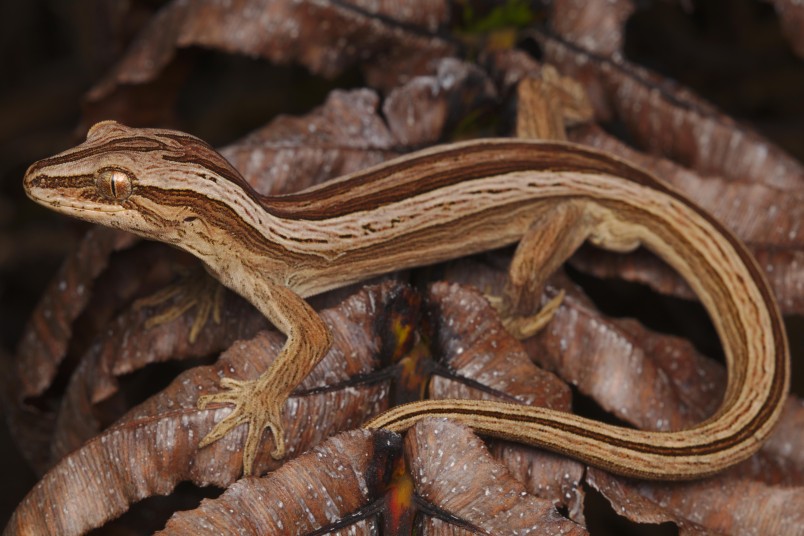
Northern striped gecko. Credit Samuel Purdie
Conservation work at Mahakirau continues daily and year-round. When conditions aren’t ideal for fieldwork, Sara catches up on essential desk-based tasks, and, at night, she “embraces” the perfect wet conditions for monitoring frogs and geckos, creatures she is particularly passionate about.
“There’s always rewarding work to do; this labour of love keeps me inspired every day.”
The Give a Trap website was created in memory of conservationist Penny Willocks. It matches donors with community trapping projects throughout the country. You can choose how many traps to donate and who to give to. Check it out at giveatrap.org.nz
